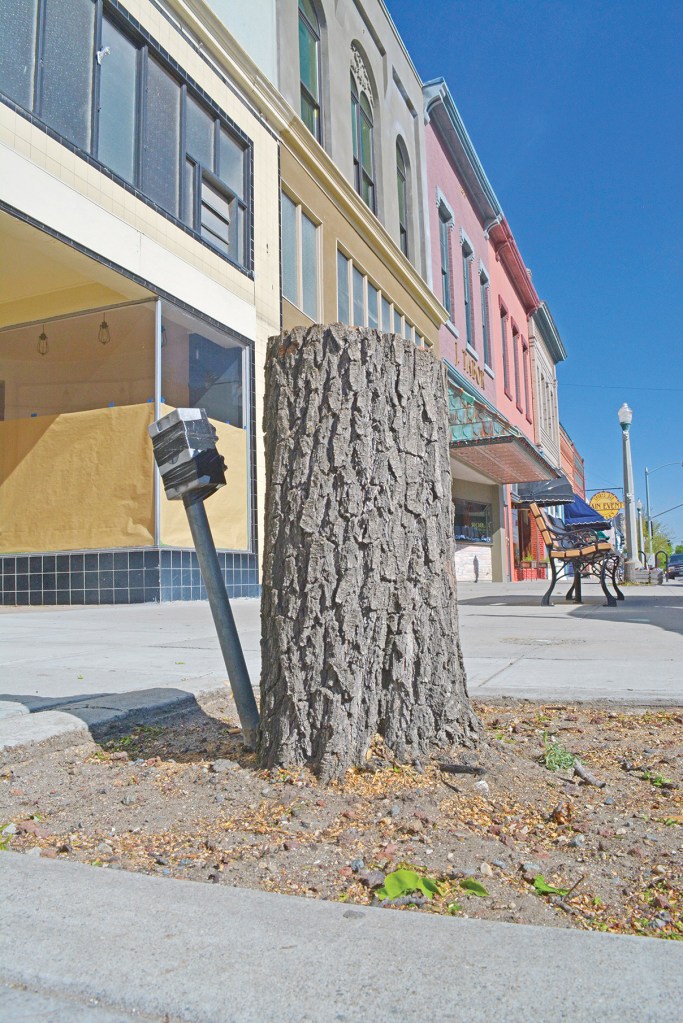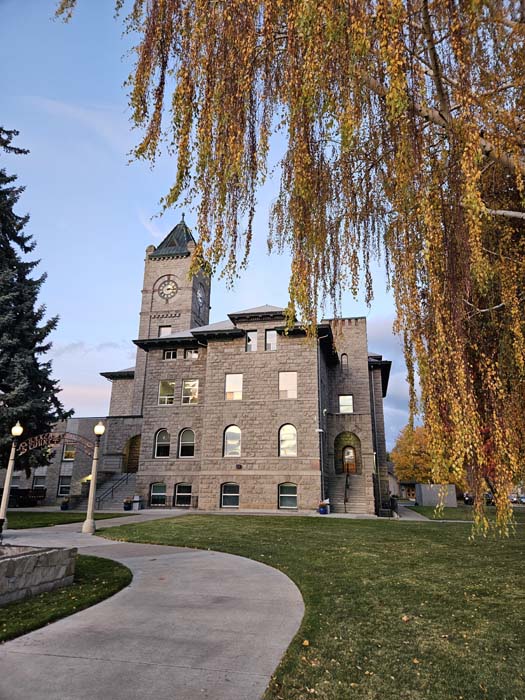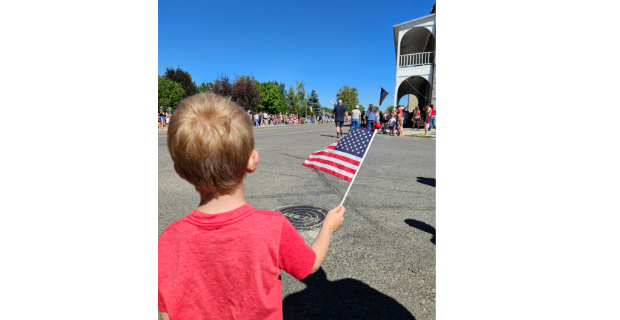Urban Forestry
Published 12:25 pm Monday, May 16, 2016

- S. John Collins / Baker City HeraldSix trees on the west side of Main Street between Valley and Washington were removed because the trees were dead or dying. Trees have also outgrown their root wells.
The Baker City Tree Board’s campaign to improve the city’s downtown “forest” — and reduce the risk of people tripping on buckled sidewalks — continues this spring with the replacement of six sickly trees on the west side of Main Street.
The Tree Board is working with six property and business owners on the project, said Jennifer Murphy, who is the city’s liaison to the Tree Board.
Six deciduous trees — two flowering plums, two flowering crab apples, one flowering pear and one maple — will be replaced.
The trees had stood at 1829, 1901, 1911-13, 1917, 1925 and 2021 Main St. — all between Valley and Washington avenues.
Those trees, which were planted when Main Street was rebuilt downtown in the 1980s, were ailing, said Clair Button, chairman of the Tree Board.
“We’ve got a lot of older trees that have suffered damage from cold winters,” Button said.
Describing trees as “older” at about age 30 might sound strange, given the longevity of trees, Button concedes.
But the lifespan of a tree depends largely on where it grows. And a downtown business district qualifies as extremely harsh habitat by the standards of most trees, Button said.
“Surrounded by concrete, brick and glass, the lifespan of a tree is going to be less,” he said.
The urban environment stresses trees in multiple ways, said Button, who is a retired botanist.
First, the concrete street and sidewalks, as well as the mainly stone buildings downtown, absorb and reflect summer’s heat.
Second, Main Street’s buildings, though hardly the sort of “concrete canyons” that define, say, Manhattan, are tall enough to funnel the wind, which saps moisture from the trees.
Finally, some of the tree species planted back in the 1980s are more susceptible to subzero temperatures, especially when those frigid periods are interspersed with above-freezing weather, Button said.
During a winter thaw, sap can flow in flowering plums and other decorative trees, he said.
But if the temperature quickly plummets to 10 or 20 below zero — a not uncommon situation in Baker City — that sap can freeze and actually crack the tree’s bark.
The damage doesn’t always kill the tree outright, but it can severely weaken the tree and shorten its lifespan.
Some other Main Street trees are thriving, Button said, including locust trees on the east side of the street between Broadway and Church.
Weather and the manmade environment of a commercial district aren’t the only issues with Main Street trees, Button said.
An arborist who looked at many of the trees found signs of heart rot, and the flowering pear at 1917 Main, in front of Zephyr, was damaged last year when it was hit by delivery truck.
In addition, Button said many Main Street trees have outgrown their wells — the space carved for them in the sidewalk. In several cases the trees’ roots have buckled the sidewalk, creating a hazard for pedestrians.
The city will address that problem in two ways, Button said — by enlarging the tree wells before the new trees are planted, and by putting in a plastic barrier that reduces the chance of roots pushing up the sidewalk.
See more in the April 29, 2016, issue of the Baker City Herald.






